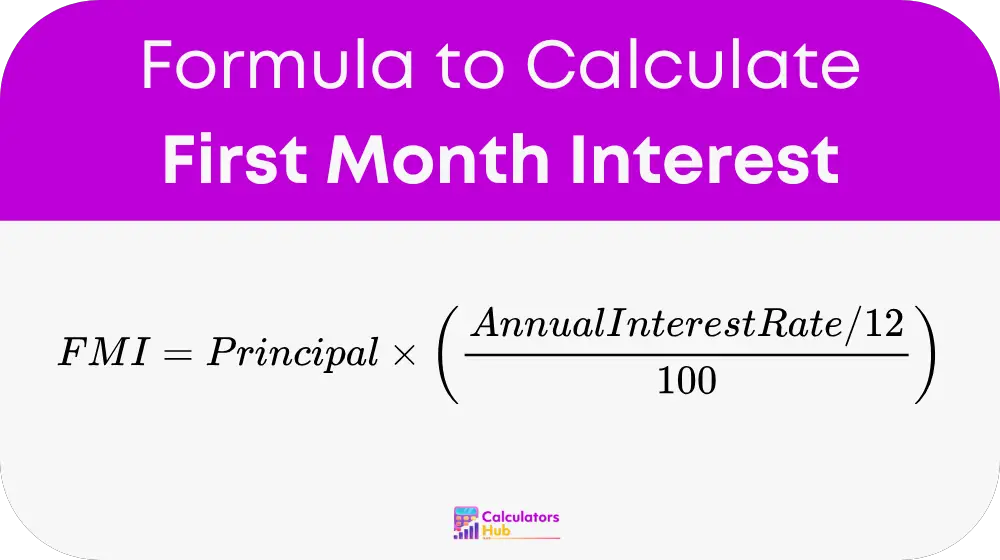The First Month Interest Calculator helps you figure out the amount of interest you owe in the first month of a loan. This is especially useful for fixed-rate loans such as mortgages, auto loans, or personal loans. Understanding your first month's interest allows for accurate budgeting and financial planning from the start. This tool belongs to the Loan and Mortgage Calculation category.
Whether you're applying for a new loan or reviewing a loan estimate, this calculator simplifies the math and helps you understand the cost of borrowing during the very first billing cycle.
Formula of First Month Interest Calculator

Where:
- Principal = the original loan amount
- Annual Interest Rate = yearly interest rate (percentage, such as 6%)
This formula assumes interest accrues monthly and doesn’t account for compounding or amortization adjustments, which vary by lender and loan type.
Quick Reference Table
Here’s a table with sample interest values for various principal amounts and interest rates to quickly understand what you might pay in the first month:
| Principal Amount | Annual Interest Rate | First Month Interest |
|---|---|---|
| $10,000 | 5% | $41.67 |
| $10,000 | 6% | $50.00 |
| $50,000 | 4% | $166.67 |
| $100,000 | 3.5% | $291.67 |
| $250,000 | 7% | $1,458.33 |
This table is helpful for quick estimates without doing any calculations.
Example of First Month Interest Calculator
Let’s say you're taking out a personal loan of $20,000 at an annual interest rate of 6%. What is your first month’s interest?
Step 1: Convert annual interest rate to a monthly rate
Monthly Rate = 6 / 12 = 0.5%
Step 2: Multiply by principal
First Month Interest = $20,000 × 0.5 / 100 = $100.00
So, you would owe $100 in interest for the first month.
Most Common FAQs
In most loans, the first month’s interest is part of your initial monthly payment. In amortized loans, you pay interest first, and the rest goes to reduce your loan balance.
It works best for fixed-rate loans. For variable-rate loans, the interest amount may change over time, so monthly interest will vary.
It helps you understand your upfront costs and how much of your first payment goes to interest versus principal. This is especially important when comparing loan offers.